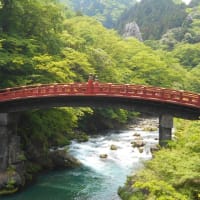
*3 New industrial revolution
It is commonly referred to as the fourth industrial revolution. However, what is usually called the second industrial revolution is when the power source changed from coal to oil, and what is called the third industrial revolution is when computers and the Internet were introduced. Rather, it may be better to combine the first and second industrial revolutions, and the third and fourth industrial revolutions. This is because the nature or classification of each revolution becomes clearer. In English, it would be like adding " great" to " industrial revolution " . Based on this nomenclature, the essence of the first great industrial revolution is the ``substitution of manual labor by machines.'' In contrast, the essence of the second great industrial revolution is the ``replacement of mental labor by machines.'' Another characteristic of this second great industrial revolution is that it is opening up possibilities for the fusion of many science and technologies, such as the introduction of new energy and the fusion of machinery and biotechnology.
On the other hand, however, behind this state of development, the problem that ``social structural strength'' has not kept pace with ``technological efficiency'' remains a major issue . In fact, it can be said that the gap is widening. The major feature of the second great industrial revolution is deeply related to the methodology of what should be done to fill this gap and how to proceed with the replacement of brains by machines. It seems to be occurring.
The conflict between democracy and totalitarianism may become meaningless. Or perhaps the social sciences will experience even more shock than the natural sciences, and this situation could lead to the creation of a new form of democracy and social science.
Furthermore, in developed countries, human populations are aging. However, in this situation, just as the materials that made up "machines" changed from "wood to steel" during the first industrial revolution, the materials that made up "human resources" changed from "intelligence to artificial intelligence." It may be the cause of this. In a country like Japan, where the aging population is rapidly decreasing and the birthrate is declining, this will likely become the background for the widespread introduction of intellectual ability to replace humans, as well as physical ability connected to it. This is because there is a need for it, and when I say broadly, I mean that it can be a public demand for cities, municipalities, and the country as a whole. During the Industrial Revolution in England, machines were able to be introduced because, despite various frictions, necessity outweighed human labor.
In relation to the budget deficit, it will be necessary to use profits from overseas to build new industries in the country in the coming years. However, in reality, there may be many difficulties due to legal regulations and social customs. There is also the problem that it would be cheaper to experiment with these new experiments in developing countries rather than in Japan. The formation of new industries, social science, and democracy in the era of AI and big data are issues that must be urgently addressed.
* 4 Possibility of natural disasters (earthquakes, epidemic, global warming)
An unstable factor in Japan is earthquakes that can occur anywhere in the country. Moreover, these earthquakes have the potential to significantly destroy economic bases (Kanto, Nankai Trough). Furthermore, natural disasters (wind and flood damage) pandemic caused by the current covid virusc and global warming are expected to increase. These natural disasters are caused by external factors, are highly shocking, and cannot be easily prevented by humans. Therefore, it is important to reduce the number of man-made disasters as much as possible on a daily basis . In terms of funding, it is a domestic "portfolio" issue, and at the same time it is also related to the nature of the second great industrial revolution. It is also related to the future prospects of cities and the issue of the aging population and declining birthrate. In rural areas, there is a concentration of population in areas such as prefectural capitals (concentration in urban areas), but it may be possible to more efficiently build and maintain medical and disaster prevention facilities by concentrating the population to some extent. However, there may be a problem with how to concentrate. Compact cities are being talked about, but when considering the impact on the environment and housing (and the impact on the automobile industry), it seems that the hub-and-spoke concept is more useful overall. What size of population is desirable for a city, what type of clustering is desirable, and other issues that are also related to how cities should behave in the new industrial revolution.
*5 Diplomatic /Military Conflict between the US and China
Perhaps the most significant external factor for Japan today is the conflict between the United States and China. For this reason, Japan may tend to focus on the United States and China. However, what will emerge from now on is not limited to the rise of China. This is because it appears to be a multipolar development of civilizations in the world. And there are many kinds of civilizations . So far, we have explained the types of civilizations and quasi-civilizations. By paying attention not only to Chinese civilization, but also to Indian civilization, Islamic civilization, and many other quasi-civilizations, and connecting them, the safety of Japan and Japanese quasi-civilizations can be maintained. Under these circumstances, it may be necessary to reconfirm the state of Japan-US relations from the time Perry arrived on the voyage to the present. The question is whether this alliance is limited to an alliance between nations, or whether it is something more than that.
All rights reserved to M ariake


























※コメント投稿者のブログIDはブログ作成者のみに通知されます